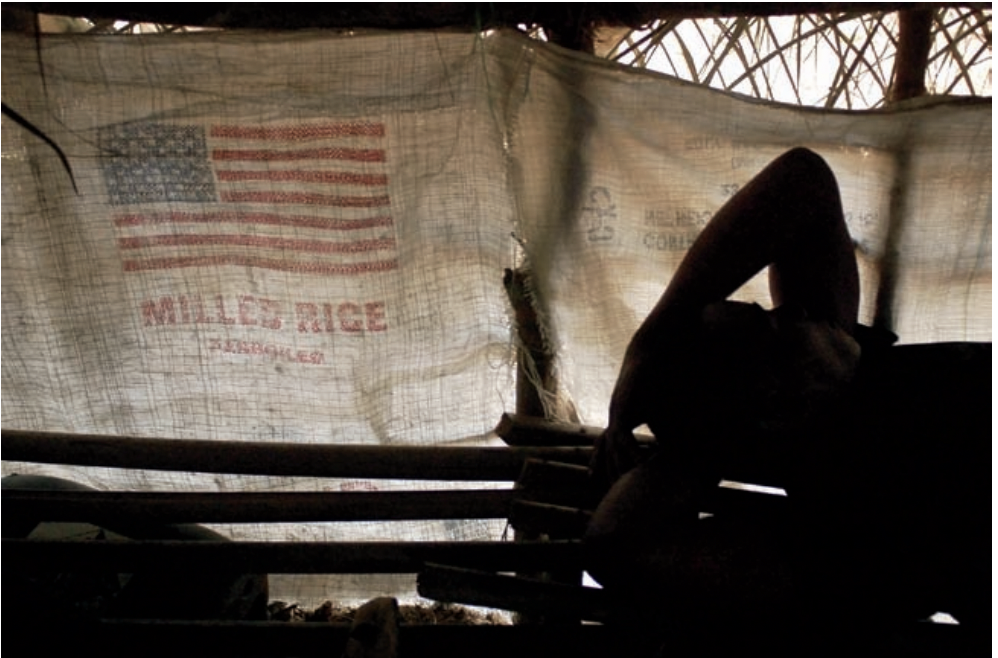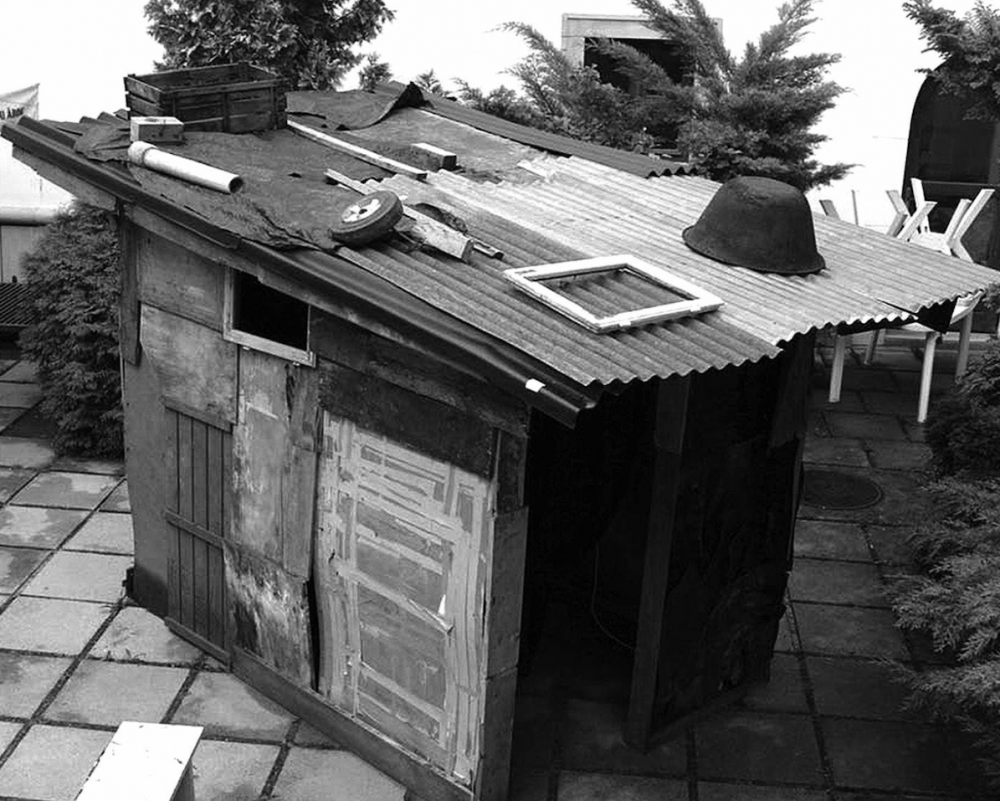The Unscripted Potential of Urban Space: The Art of Shandor Hassan
Opinion Piece by Sofia Kavlin
“Waste is not waste until it is wasted.” was the ethos of an eco-village where I briefly lived in the south of the Arava Desert.
Sandwiched between Jordan and Egypt, I would wake up at five and rotate between turning a heap of compost some mornings, feeding the biogas machine, or cycling on a retrofitted blender bike to make oatmeal flour for our solar oven cookies. No one ever said that coming back to square one survival would be glamorous — it takes a lot of creativity. There’s something inherently creative about meeting our needs with the bare minimum. When given a metaphorical blank slate, our imagination steps in to transform seemingly lifeless urban spaces into a plethora of unscripted potentials.
I met Shandor Hassan while gazing nostalgically at a heap of Jerusalem artichokes at the Farmer’s market in Fort Greene. Shandor, who has had a fruitful career as a photographer, woodworker, and urban interventionist, is one of those rare individuals that meets his environment with equal parts inquisitiveness and creativity.
Shandor Hassan builds survival shelters from discarded urban debris. Hassan’s choice of location — semi-abandoned spaces — and the risk involved in trespassing private property disrupt dominant narratives about power and place.
“I consider the process of building shelters from scavenged materials related to a fundamental core human need for creative expression.” Says Hassan, “People who create temporal shelters out of absolute necessity are organically realizing the potential of what many of us call trash.”

Credit: Hassan, Brooklyn, New york 2010
Violence and liminality create the conditions for human creativity to flourish.
Abandoned (liminal) urban spaces, a consequence of government neglect and racist urban policies, push people to build new structures out of necessity. One example is the exploration of post-war liberian urbanism offered by Daniel Hoffman. Following the fall of the Revolutionary United Front in 2003, ex-fighters like Arthur Collie, a.k.a Major General Human Garbage, could not find a place in the formal economy. Arthur Collie, like many others now inhabit urban slums like Titanic or Congo Town Black Road escaping the oversight of formal institutions and lending themselves to a sort of creative upheaval.

Credit: Danny Hoffman, 2017
Bringing the hidden realities of displacement, poverty, and violence to city centers is at the heart of Hassan’s work. He set off to build a series of survival structures in abandoned spaces around New York City area and other locations like Budapest, Miskolc, and Barcelona.
“The need for understanding and building “survival shelters” might be considered a response to a global dilemma; at the very least, it is a global reality.” — Hassan
Survival shelters are meant to be provocative — standing for a day (if police or property owners get to it first) or up to six months until eventually decaying back into the ground.
They also raise essential questions about poverty, displacement, and the right to the city (for whom and by whom?). His survival shelter project in Budapest was built in a Roma neighborhood in the process of being torn down for an urban renewal project. Using the debris of the recently evicted, Shandor exposed the biased policies that push people out for the sake of increasing real estate valuation. The reutilization of urban debris makes the act of remembrance political — shedding light on the traditions that imbued a place with meaning, and mourning the loss of community.

Credit: Shandor Hassan, Budapest, Hungary 2009
Passerby are also asked to confront their own biases.
While working in Barcelona, Shandor had a brief conversation with a curious passerby in which they asked if he intended to live in the installation. Just for fun, Shandor said, “Yes, of course,” which led to a brief encounter with the Catalonian police, who did not share Shandor’s sense of humor.
The element of improvisation and performance invites passersby to dialogue with the unexplored potential of urban space resulting from neglect and violence. The reactions he receives from curious onlookers and government agents become a part of the performance itself — inviting people to question our role as city dwellers and enablers of space.

Credit: Shandor Hassan, Brooklyn, New York, 2012
It’s impossible for planners and policymakers to predict all the ways in which people’s necessities transform the city, so maybe we should steer away from trying.
People will always step in to fill in the gaps where needs are not being met. This capacity for resilience and adaptation should be cherished, not criminalized — so perhaps we should challenge the role of planners in defining the use of space.
Urban Play is a relatively new concept that promotes human playfulness as a defining feature of urban experience. Omar el Feki, a playworker, and architect, based in NYC, explores the role of play in activating the unscripted potentials of public space.
His research emphasizes the value of creativity to “invent, discover and expand the meanings that urban spaces can convey’’. The work of artists like Shandor invites us to look at the city with a creative lens. Question the traditional uses of place ina city center may help us stumble on new behaviors, movements, and ways of being that we could not have dreamt up ourselves.

Credit: Hassan, Miskolk, Hungary 2010
Source: Shandor Hassan, Darkroom installation interior (2008)
I hope this piece may inspire you (as a reader and a city dweller) to embark on your own urban expeditions and question the dominant narratives that become solidified through the use of space. This is an invitation to pick up the fragments at your disposal and give them a new life , and consequently a new story — so that your “what is” brings you a step closer to the “what ifs” that will bring lasting change.
Born in Los Angeles, California in 1968, Hassan lives in Brooklyn, NY. He works in the media of photography, site specific installations, found materials, furniture design, and building. He holds a BFA in Photography from the University of New Mexico, was a Fulbright scholar in Hungary (2008–2010), was an NYFA recipient for ARCHITECTURE / ENVIRONMENTAL STRUCTURES / DESIGN (2016), and was an NYSCA recipient for the Québec Arts/Exchange Residency (2017). He participated in the Istanbul Biennial in 2005, the Budapest OFF Biennial MUSEUM in 2015 and was a faculty member of the International Center of Photography from 1999–2008. He has been exhibiting in New York City and internationally since 1995.
